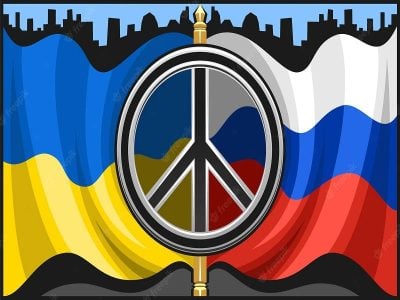Five Reasons Why Trump Should Revive the Draft Russian-Ukrainian Peace Treaty

Trump has everything to gain by picking up where everyone left off over two and a half years ago.
The Wall Street Journal’s report that Trump wants to create a Western-patrolled DMZ along the Line of Contact (LOC) for freezing the Ukrainian Conflict, which was analyzed here and here, dangerously runs the risk of escalating tensions with Russia to the point of a Cuban-like brinksmanship crisis. It would therefore be much better for him to revive the draft Russian-Ukrainian peace treaty from spring 2022 instead. Other than averting World War III, which is an obvious motivation, here are five others:
1. Fulfill His Democratic Mandate to Bring Peace to Europe
Trump won the popular vote and therefore has a democratic mandate to fulfill his campaign pledge to bring peace to Europe. Doing so would be a strong start to his second term and reassure his supporters that he won’t backtrack on his commitments like last time. Additionally, other countries will see that he’s serious about doing what he promised, thus leading to them taking him more seriously and making them less likely to haggle with him. He might also set himself up to win the Nobel Peace Prize too.
2. Create Less Space for the Deep State to Manipulate Him
Another one of Trump’s promises is to purge the country’s permanent military, intelligence, and diplomatic bureaucracies (“deep state”) of warmongering neoconservatives. If he backtracks on the most important of his foreign policy promises, then they’ll have more space to manipulate him. After all, it was his decision to bomb Syria early on into his first term that set the stage for every other foreign policy disappointment. Failure to hold his ground on Ukraine would be a very bad omen.
3. Compel the EU to Take More Responsibility for Its Defense
Trump’s reported plan for NATO aims to compel the EU to take more responsibility for its defense so as to rebalance the burden that the US carries in this regard and then facilitate the latter’s “Pivot (back) to Asia” to more muscularly contain China. This won’t be achieved with nice words or even threats, but only through shocking the system by forcing them to step up after he ends the conflict in this way, which is their worst fear and would thus leave them with no choice but to do what demands afterwards.
4. Help “Un-Unite” Russia and China as Realistically as Possible
He promised on the eve of the election to “un-unite” Russia and China, and while it’s impossible to turn them against each other, the most realistic outcome that he can hope for is to reduce Russia’s potentially disproportionate dependence on China by gradually restoring the European vector of its balancing act. Phased sanctions relief as a reward for compliance with a ceasefire/armistice could do a lot to avert the aforesaid scenario in a non-threatening way that would also be tacitly acceptable for Russia too.
5. Replenish Stockpiles to Better Prepare for Contingencies
And finally, swiftly ending the Ukrainian Conflict by reviving spring 2022’s draft peace treaty as the basis for this would enable the US to fully focus its military-industrial complex on replenishing its depleted stockpiles in order to better prepare for contingencies, such as those that might soon develop in Asia. This would be difficult to do if Trump keeps arming Ukraine after either being manipulated into turning this into another forever war or as an additional security guarantee to go with his reported DMZ plan.
*
As can be seen from the five points above, Trump has everything to gain by picking up where everyone left off over two and a half years ago to sustainably end the Ukrainian Conflict on the terms that Kiev and Moscow tentatively agreed to shortly after it began, albeit with minor modifications. The current territorial realities, whether with regard to the LOC or the entire administrative borders of the four Ukrainian regions that joined Russia, would have to be recognized. If he does so, then a deal is certain.
*
Click the share button below to email/forward this article to your friends and colleagues. Follow us on Instagram and Twitter and subscribe to our Telegram Channel. Feel free to repost and share widely Global Research articles.
Don’t Miss Out on Global Research Online e-Books!
This article was originally published on the author’s Substack, Andrew Korybko’s Newsletter.
Andrew Korybko is an American Moscow-based political analyst specializing in the relationship between the US strategy in Afro-Eurasia, China’s One Belt One Road global vision of New Silk Road connectivity, and Hybrid Warfare. He is a regular contributor to Global Research.
Featured image source

